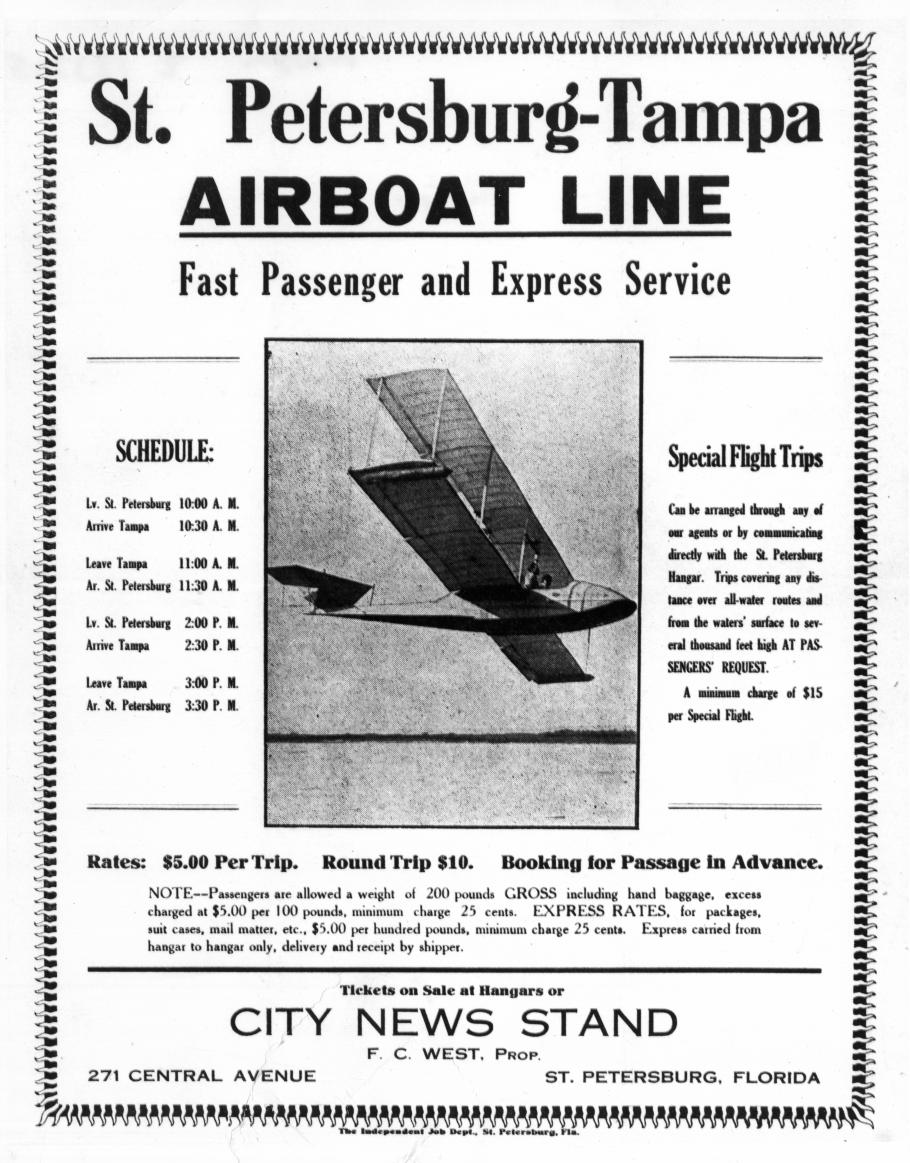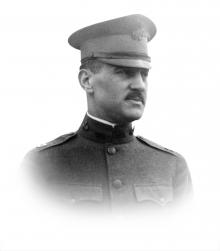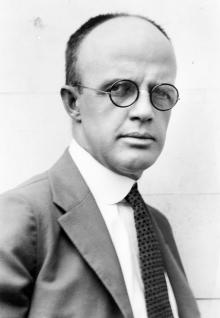Air Mail
Air Mail
The new field of air transportation was risky business.
Early airlines proved unprofitable. They flew and then folded. The airline industry could not get off the ground.
The world's first scheduled airline, the St. Petersburg-Tampa Airboat Line, began flying across Tampa Bay on January 1, 1914. It lasted only three months.
The Airboat Line safely transported 1,204 passengers across the bay. But without a continuing subsidy from St. Petersburg or steady income from tourist traffic, it could not survive. The airline closed at the end of March.
As it had with stagecoaches, steamships, and railroads, the federal government stepped in to foster a new transportation system. The U.S. Post Office began using airplanes to move the mail in order to help establish an air transportation system.
To demonstrate the potential of transporting mail by air, the Post Office approved a special air mail flight as part of the festivities at an international air meet on September 23, 1911, on Long Island, New York.
Pilot Earle Ovington flew a Queen airplane on this brief air mail flight in 1911. The Queen was based on the popular Blériot monoplane design. With a full mail bag squeezed between his legs, Ovington took off and flew to Mineola, a few miles away. He banked his airplane and pushed the bag overboard. It fell to the ground and was retrieved by the local postmaster.
On the morning of May 15, 1918, two air mail pilots in Curtiss Jennys took off within minutes of each other, one from Washington, DC, the other from Long Island, New York. At Philadelphia, they would exchange mailbags and fly on, thus opening up two-way Washington-Philadelphia-New York air mail service.
At least that was the plan....
Objects from the First Scheduled Air Mail Flight
The new U.S. Air Mail Service proved successful. It soon extended its routes across the continent and its flights around the clock.
Despite some early setbacks, the Air Mail Service completed about 90 percent of its flights. A few months after service began in 1918, the Army withdrew from flying the mail and left the Post Office in charge with its own pilots and aircraft.
Air mail service opened between New York and Chicago in September 1919. Service reached Omaha, Nebraska, the following May. In September 1920 it reached San Francisco. By 1924 mail was also being flown at night, thanks to lighted airways the Post Office was creating across the nation.
Compared to moving the mail by train, flying cut coast-to-coast delivery time by about a day. When regular overnight air mail service began in 1924, it slashed delivery time to 29 hours, almost three days faster than by rail.
Meet Some of the People in Charge
Captain Benjamin Lipsner
Captain Lipsner helped guide the Air Mail Service during its early days. Under Lipsner, it acquired new Standard biplanes and shifted its Washington base of operations to College Park Airport in Maryland, the oldest airport in the world. The service became a proving ground for civil aviation.
Colonel Paul Henderson
As Second Assistant Postmaster General, Colonel Henderson helped establish overnight air mail service. Under his direction, powerful rotating beacons were placed along the transcontinental route to guide pilots in the dark. He modeled the system after an experimental lighted airway the Army had created between Dayton and Columbus, Ohio.
The Post Office had established a reliable and practical air mail system. The next step was to turn air mail delivery over to private airlines. With this action, the federal government hoped to grow commercial aviation and allow airlines to flourish.
Flaws in the System
By the end of the 1920s, private airlines were flying an expanding system of air mail routes. Passenger service, however, remained almost nonexistent.
While airlines often prospered flying the mail, the system had problems. The Post Office's bidding process for air routes resulted in an unfair payment system, and short-term contracts discouraged airlines from investing in long-term development.
By the summer of 1927, an effective commercial airline system was providing reliable air mail service. The federal government continued to shape the new industry by regulating the airways, guiding aviation's growth, and promoting safety and technology. Most airlines prospered from this legislation, but the system was not without flaws.
Small, independent airlines complained the 3rd Amendment to the Contract Air Mail Act of 1925, otherwise known as the McNary-Watres Act, was unfair, even though most had sold their own contracts, and some did not even exist when the law was passed. Together, independent airlines fought to break holding companies power. Near disaster ensued, followed by the Air Mail Act of 1934.
In 1952 the government ended its decades-old subsidy for flying the mail. While air mail remained a valuable source of income, airlines no longer needed it to survive.
In the late 1970s, the government deregulated the airline and trucking industries. As a result, air express carriers specializing in rapid delivery of high-priority packages rose to prominence. In 1973, Federal Express became the first airline to operate exclusively as an express carrier. Air express airlines now operate their own aircraft and trucks to provide overnight package delivery.
One example of this success was UPS. In the package delivery business since 1907, UPS experimented with air express in the early 1930s. In 1953 it began "Blue Label Air" second-day delivery through an integrated air and ground system. In 1982 it joined the ranks of air express airlines by introducing "Next Day Air."
Once an expensive and somewhat dangerous endeavor, air mail was now a quick, profitable, and fine tuned system.
Patrice Clarke-Washington worked as a captain for the United Parcel Service, better known as UPS. UPS is one of the air express carriers specializing in rapid delivery of high-priority packages which rose to prominence after deregulation in the 1970s. In 1994, Clarke-Washington became the first African American woman to serve as a captain for a major U.S. airline. One of her uniforms from 1998 resides in the museum's collection.


